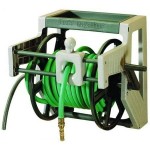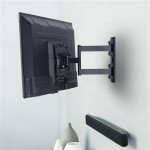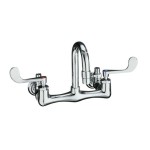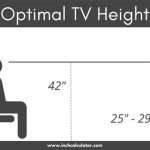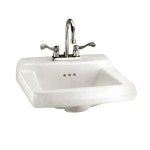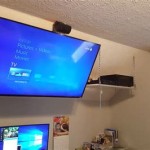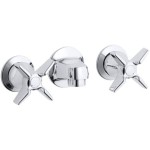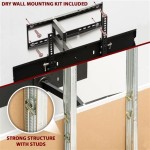Inside Wall Mounted Air Conditioner: A Comprehensive Overview
Wall-mounted air conditioners, also known as ductless mini-split systems, represent a popular cooling solution for both residential and commercial spaces. Their design focuses on providing targeted cooling without the extensive ductwork associated with central air conditioning systems. Understanding the components, functionalities, benefits, and potential drawbacks of these units is crucial for making informed decisions regarding climate control.
The operation of a wall-mounted air conditioner is based on the principles of refrigerant cycling. A refrigerant, a chemical compound with specific thermodynamic properties, absorbs heat from the indoor air and releases it outdoors. This process involves a continuous cycle of compression, condensation, expansion, and evaporation. The fundamental goal is to transfer heat, thereby reducing the indoor temperature and creating a more comfortable environment.
The typical wall-mounted air conditioner comprises two main units: an indoor unit and an outdoor unit. The indoor unit, which is the focus of this article, is mounted on a wall inside the space to be cooled. It houses the evaporator coil, a fan, and various control components. The outdoor unit, located outside the building, contains the compressor, condenser coil, and expansion valve. These two units are connected by refrigerant lines and electrical wiring.
Key Components of the Indoor Unit
The indoor unit of a wall-mounted air conditioner contains several crucial components that work in concert to deliver cooling. Understanding the function of each part is essential for troubleshooting and maintenance.
First, the evaporator coil, typically made of copper or aluminum, is the heart of the cooling process within the indoor unit. The refrigerant enters the evaporator in a low-pressure, low-temperature state. As indoor air is blown across the coil by the fan, the refrigerant absorbs heat, causing it to evaporate and turn into a gas. This absorption of heat cools the air, which is then circulated back into the room. The design of the evaporator coil maximizes surface area to enhance the heat transfer efficiency.
Secondly, the fan plays a critical role in circulating air over the evaporator coil and distributing the cooled air throughout the room. The fan is powered by an electric motor and is designed to operate quietly and efficiently. Different fan speed settings allow users to adjust the airflow to their desired level of comfort. Some units also incorporate swing functions that automatically direct airflow horizontally and vertically, improving air distribution. The fan assembly is typically designed for easy cleaning and maintenance.
Thirdly, the air filters are an essential component for maintaining air quality and ensuring the efficient operation of the air conditioner. The filters remove dust, pollen, and other particulate matter from the air before it passes over the evaporator coil. Clean filters improve indoor air quality, prevent the buildup of debris on the coil, and help maintain optimal cooling performance. Regular cleaning or replacement of the air filters is a critical maintenance task. Failure to maintain the filters can lead to reduced airflow, decreased cooling efficiency, and potential damage to the unit.
Fourthly, the condensate drain system is designed to remove the moisture that condenses on the evaporator coil as the refrigerant absorbs heat. As warm, humid air passes over the cold coil, water vapor condenses and collects on the surface. This condensate is then channeled through a drain line to the outside or to a designated drainage point. Proper drainage is essential to prevent water damage and mold growth inside the unit and the surrounding area. The drain pan and drain line should be periodically checked and cleaned to ensure unobstructed flow.
Finally, the control panel and sensors are integrated into the indoor unit to regulate its operation and maintain the desired temperature setting. The control panel typically includes buttons or a touchscreen interface for adjusting temperature, fan speed, and operating mode. The sensors monitor the indoor temperature and communicate with the control system to adjust the cooling output accordingly. Some units also include timers that allows user to schedule the operation. Advanced models may incorporate smart features, such as Wi-Fi connectivity, which enable remote control and monitoring via a smartphone app.
Advantages of Wall-Mounted Air Conditioners
Wall-mounted air conditioners offer several advantages over traditional central air conditioning systems, particularly in situations where ductwork is not feasible or cost-effective.
One primary advantage is their ease of installation. Unlike central air conditioning systems, which require extensive ductwork, wall-mounted units can be installed with minimal disruption to the building structure. The indoor and outdoor units are connected by a small hole in the wall for the refrigerant lines and electrical wiring. This makes them a suitable option for older homes or buildings where installing ductwork would be impractical or cost-prohibitive. The installation process generally involves mounting the indoor unit on the wall, connecting the refrigerant lines to the outdoor unit, and wiring the electrical connections. Professional installation is recommended to ensure proper operation and safety.
Another significant advantage is their energy efficiency. Many wall-mounted air conditioners are equipped with inverter technology, which adjusts the compressor speed to match the cooling demand. This allows the unit to operate at a lower power consumption level when full cooling capacity is not required, resulting in significant energy savings compared to traditional air conditioning systems. Furthermore, the absence of ductwork eliminates energy losses associated with duct leakage, which can account for a significant percentage of cooling energy in ducted systems. Energy efficiency is often measured by the Seasonal Energy Efficiency Ratio (SEER) rating, with higher SEER ratings indicating greater energy efficiency. Selecting a unit with a high SEER rating can lead to long-term cost savings on energy bills.
Furthermore, their zoning capabilities are a major benefit. Wall-mounted air conditioners allow for individual zone control, meaning that different rooms or areas can be cooled to different temperatures. This is particularly useful in homes or offices where different occupants have different temperature preferences or where certain rooms are used more frequently than others. Zoning allows users to cool only the occupied spaces, saving energy and reducing overall cooling costs. Multi-zone systems, which consist of one outdoor unit connected to multiple indoor units, provide even greater flexibility in temperature control.
Potential Drawbacks and Considerations
While wall-mounted air conditioners offer numerous benefits, potential drawbacks should be considered before making a purchase.
Aesthetically, the indoor unit is visible on the wall and may not be suitable for all decorating styles. While manufacturers have made efforts to design more aesthetically pleasing units, some individuals may find the presence of the indoor unit visually intrusive. Concealing the unit behind furniture or decorative panels may reduce its cooling efficiency by obstructing airflow. Careful consideration should be given to the placement of the indoor unit to minimize its visual impact while maintaining optimal performance.
The initial cost can be higher compared to window units, particularly for multi-zone systems. However, the long-term energy savings and improved comfort may outweigh the initial investment. It's advisable to obtain quotes from multiple installers and carefully compare the total cost of ownership, including installation, energy consumption, and maintenance.
Maintenance is essential for ensuring the long-term performance and reliability of wall-mounted air conditioners. Regular cleaning or replacement of the air filters is crucial for maintaining air quality and cooling efficiency. The condensate drain line should be periodically checked and cleaned to prevent clogs and water damage. The outdoor unit should also be kept free of debris and obstructions. Professional maintenance should be scheduled periodically to inspect the refrigerant charge, electrical connections, and other critical components. Proper maintenance can extend the lifespan of the unit and prevent costly repairs.
Noise levels should also be considered. While most modern wall-mounted air conditioners are designed to operate relatively quietly, some units may produce noticeable noise, particularly at higher fan speeds. Selecting a unit with a low noise rating can minimize disruption and improve comfort. The placement of the outdoor unit can also affect noise levels. Avoid installing the outdoor unit near bedrooms or other areas where quiet is essential.

Installing Split Air Conditioner Unit On Internal Wall Cool Contractors

Split Wall Mounted Air Conditioner 5 1kw 80m2 Outdoor Indoor Unit

Wall Mounted Air Conditioner Tiwm Series York Split

Fiber 4 Star Wall Mounted Air Conditioner Indoor Unit At 28000 Piece In Ahmedabad

Wall Mounted Air Conditioner Mlg Aermec Ceiling Floor Duct

Wall Mounted Single Split Hvac Business Lg Global

Wall Mounted Airstage Single Room Mini Split Systems Residential Fujitsu General United States Canada

The Pros And Cons Of Wall Mounted Hvac Units Sewell Service

Mini Split Indoor Unit Ing Guide How To Pick The Perfect

How Are Wall Mounted Air Conditioners Installed

